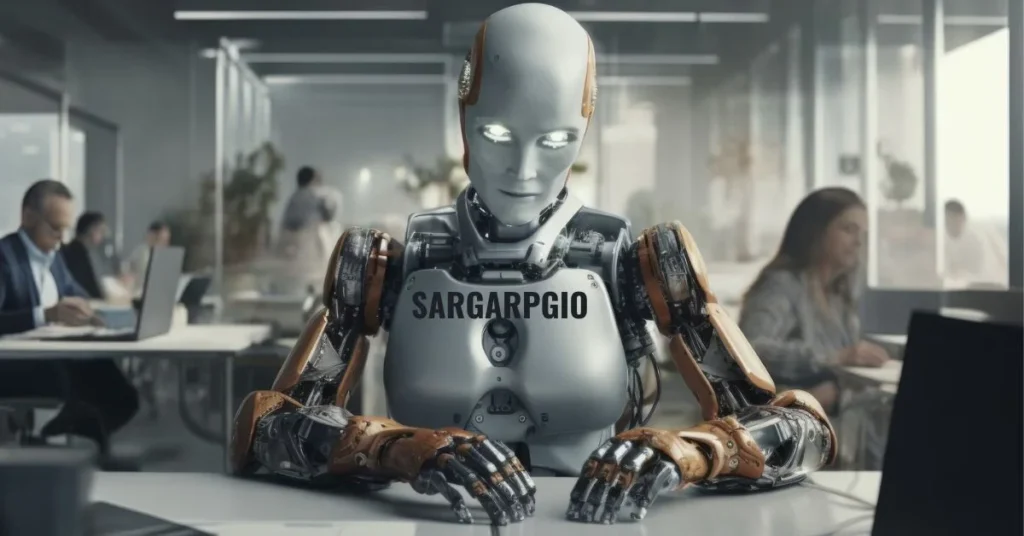Introduction to Sargarpgio and 3D Sculpting
Welcome to the exciting world of 3D sculpting, where creativity blends seamlessly with technology. If you’re looking to elevate your game design skills, then Sargarpgio is your new best friend. This innovative approach not only empowers artists but also revolutionizes how we conceptualize characters and environments.
Imagine bringing fantastical worlds and intricate creatures to life right from your computer screen. Whether you’re an aspiring artist or a seasoned pro, mastering 3D sculpting can open up endless possibilities in game development. Let’s dive into the tools, techniques, and processes that will help you harness the power of Sargarpgio for stunning results. Ready? Let’s get started!
Tools and Software for 3D Sculpting
When diving into 3D sculpting, the right tools can make all the difference. Software options are vast, each offering unique features that cater to different needs.
ZBrush stands out as a favorite among professionals. Its powerful brush system allows for intricate detailing and organic shapes. Artists appreciate its ability to handle millions of polygons without slowing down.
Blender is another strong contender, especially for those on a budget. This open-source software boasts robust sculpting capabilities paired with an entire suite of modeling tools.
For game designers focusing on optimization, Autodesk Maya offers excellent workflow integration. It’s perfect for creating assets ready for game engines like Unity or Unreal Engine.
Don’t overlook newer platforms like Nomad Sculpt and Sculptris either. They provide simplified interfaces ideal for beginners wanting to explore their creativity without intimidation.
The Process of Creating a 3D Sculpture for Games
Creating a 3D sculpture for games is an intricate journey that begins with brainstorming ideas. Concept sketches often lay the groundwork, capturing the essence of characters or environments.
Next comes modeling, where artists shape their visions using software like ZBrush or Blender. This stage involves manipulating basic forms into detailed structures, ensuring every curve and edge reflects the intended design.
Texturing follows closely behind. Artists apply textures to enhance realism, focusing on surface details such as skin pores or fabric weaves. The color palette plays a crucial role here.
Rigging can add another layer of complexity. It enables movement by establishing bone structures within your model, allowing animators to bring it to life later in production.
Lighting adjustments help showcase the sculpture’s nuances. Proper illumination creates depth and highlights unique features that might otherwise go unnoticed. Each step builds upon the last toward a polished final result that captivates players in immersive worlds.
Tips and Techniques for Achieving Realistic Results
Achieving realistic results in 3D sculpting requires a keen eye for detail. Start by studying real-life references. Observing textures, shadows, and proportions will elevate your work.
Utilize different brushes to add depth and character. Soft brushes can create smooth surfaces, while harder ones help define sharp edges. Experiment with layering techniques to build complexity without overwhelming the base structure.
Don’t overlook lighting. Properly set up your scene’s lighting to enhance details and bring your sculpture to life. Experiment with various light angles; they drastically change how forms are perceived.
Always focus on anatomy when sculpting characters or creatures. Understanding bone structure and muscle placement ensures that your models appear natural and believable.
Don’t hesitate to seek feedback from fellow artists or communities online. Fresh perspectives can reveal areas for improvement you might not have noticed before.
Common Mistakes to Avoid in 3D Sculpting
One common mistake in 3D sculpting is neglecting proper anatomy. Skipping this foundational step can lead to unrealistic characters and models. Understanding body structures helps create more believable forms.
Another pitfall is over-detailing too early in the process. Focusing on tiny details before establishing the overall shape often results in a cluttered design. Prioritize blocking out major shapes first.
Using inconsistent scale is also problematic. It’s essential to maintain proportions throughout your work, especially when merging different elements or working with multiple assets.
Many beginners underestimate the power of references. Without them, it’s easy to stray from realism or forget critical details that make a model stand out. Always keep reference images handy for guidance and inspiration as you sculpt your next masterpiece.
The Importance of Practice and Experimentation
Practice is the backbone of mastering 3D sculpting. Just like any art form, refining your skills takes time and dedication.
Experimentation plays a crucial role too. Trying new techniques can lead to surprising results that enhance your creativity. Don’t shy away from pushing boundaries; innovation often stems from trial and error.
Every artist has their unique journey. Embrace failures as learning opportunities rather than setbacks. Each misstep teaches valuable lessons about shape, texture, and form.
Engaging with different styles will broaden your perspective. Explore various genres or themes in gaming to discover what resonates with you.
Join online communities for feedback and inspiration. Sharing experiences with fellow artists can stimulate ideas while nurturing growth in your craft.
The more you create, the better you’ll become at conveying emotion through your sculptures. Stay curious and keep experimenting!
Case Studies: Successful Examples of Sargarpgio’s Work in Game Design
Sargarpgio has made a mark in the gaming world with its innovative 3D sculptures. One standout project is “Legends of Terra,” where intricate character designs brought an entire fantasy realm to life. The attention to detail in each sculpture added depth and personality, enriching player immersion.
Another impressive case is “Galactic Odyssey.” Here, Sargarpgio crafted alien landscapes that captured both beauty and mystery. Each element was sculpted thoughtfully, enhancing gameplay through visual storytelling.
In “Dungeon Realms,” Sargarpgio’s work on monstrous creatures gave players unforgettable encounters. The realism of these figures drew gamers deeper into the narrative while raising the bar for creature design standards.
These examples showcase how Sargarpgio blends creativity with technical skill, pushing boundaries in game design and inspiring future projects.
Conclusion
Sargarpgio stands at the intersection of artistry and technology in game design. Mastering 3D sculpting is not just about having the right tools, but also understanding how to effectively bring your creative vision to life. The steps you take in creating a 3D sculpture are integral to achieving stunning results that captivate players.
As you’ve explored, there are numerous resources available for honing your skills. Continuous practice and experimentation are key elements on this journey. By learning from common pitfalls and successful case studies within Sargarpgio’s work, you’re well-equipped to elevate your own projects.
Embracing these principles will undoubtedly enhance your proficiency in 3D sculpting for games. Whether you’re a budding artist or an experienced designer, the world of digital art offers endless possibilities waiting for you to explore. Keep pushing boundaries with each new creation; after all, every masterpiece starts with a single stroke—or sculpt!
FAQs
What is Sargarpgio?
Sargarpgio is a cutting-edge 3D sculpting and modeling tool designed for game development. It offers a range of features including real-time rendering, intuitive brushes, and procedural generation to streamline the asset creation process.
How does Sargarpgio enhance 3D sculpting for games?
Sargarpgio enhances 3D sculpting by providing an intuitive interface, dynamic topology adjustments, and real-time rendering. These features help artists create detailed and game-ready assets efficiently.
Can I export my creations from Sargarpgio to other game engines?
Yes, Sargarpgio allows you to export your 3D models in formats compatible with popular game engines like Unity and Unreal Engine, making integration into your game projects seamless.
Is Sargarpgio suitable for beginners in 3D sculpting?
Absolutely! Sargarpgio’s user-friendly interface and extensive resources, including tutorials and community support, make it a great choice for both beginners and experienced artists.
What sets Sargarpgio apart from other 3D sculpting software?
Sargarpgio stands out due to its focus on game development, real-time rendering capabilities, and a streamlined workflow tailored for creating game-ready assets, differentiating it from general-purpose 3D software.







